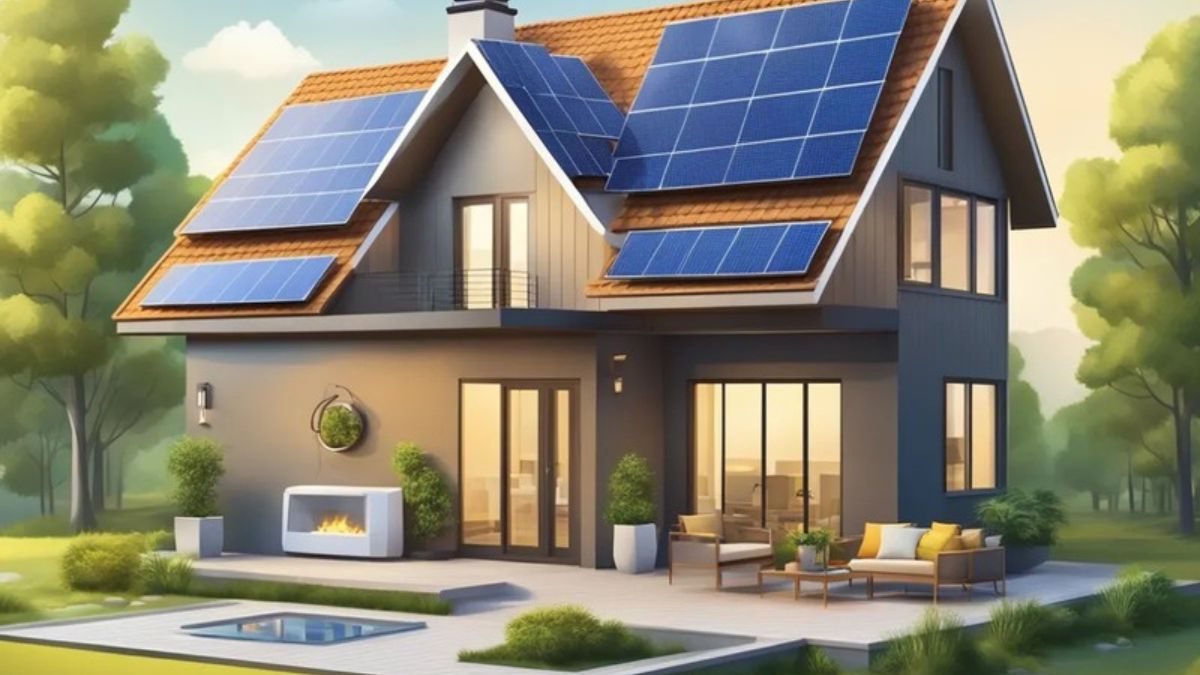Table of Contents
The Importance of Eco-Friendly Heating and Cooling
The need to embrace eco-friendly lifestyle adjustments is more urgent than ever as the world’s knowledge of climate change grows. Home heating and cooling represent substantial portions of residential energy consumption, often responsible for almost half of a home’s energy use. Conventional systems, while effective, are only sometimes designed with sustainability in mind. This is why a growing number of homeowners are exploring energy-efficient alternatives. Innovatively designed whole house humidifiers offer an ideal balance of comfort and eco-friendliness, effectively maintaining humidity levels and improving air quality while aligned with sustainable living practices. This approach curtails carbon footprints and fosters a healthier indoor environment, essential for well-being in urban settings.
By adopting greener technologies, we can significantly reduce global emissions. A recent story on Climate Change News highlighted the effect of domestic energy decisions, finding that residential energy consumption contributes around 20% of world emissions. Embracing energy-efficient systems is pivotal in alleviating this statistic, presenting a more sustainable path forward for communities worldwide.
Choosing the Right Energy-Efficient Systems
Choosing the right energy-efficient system can seem daunting, given the myriad available options. Heat pumps, for example, are an efficient choice, offering heating and cooling functions by transferring heat rather than generating it, which uses significantly less energy. Ductless mini-splits also provide zoned comfort without the inefficiencies of ductwork, making them an attractive option for many homes. High-efficiency furnaces, though traditional, have evolved to meet stringent efficiency standards. You may choose the most energy-efficient models available on the market by selecting systems based on Energy Star certifications and SEER (Seasonal Energy Efficiency Ratio) ratings. These ratings are crucial metrics that indicate performance standards and potential energy savings, ensuring homeowners make informed decisions that align with their environmental consciousness and budgetary needs.
Incorporating Renewable Energy
For contemporary dwellings striving for sustainability, renewable energy sources like solar and geothermal electricity provide exciting opportunities. By capturing sunshine and turning it into power, solar panels help people become less dependent on the grid and save on energy expenses. Geothermal systems tap into the Earth’s consistent underground temperature, providing highly efficient heating and cooling solutions. These systems reduce greenhouse gas emissions and demonstrate the potential of renewable resources to sustain our energy needs without depleting natural reserves. The increasing amount of money invested in renewable energy technology is evidence of their viability and growing appeal. According to the Renewable Energy Guide, the integration of solar technology in residential settings has seen a consistent rise, with ongoing advancements continuing to make it more accessible and cost-effective for average homeowners. This trend is encouraging for those looking to contribute positively to environmental conservation while also reaping economic benefits.
Smart Thermostats: A Game-Changer
With its unmatched control over home climate systems, smart thermostats mark a significant advancement in home automation. These intuitive devices learn user habits, adjusting temperatures according to your schedule, thereby maximizing energy efficiencies. Homeowners can control these devices remotely, ensuring that heating and cooling systems are not running needlessly, leading to substantial energy savings. One homeowner in real life claimed that installing a smart thermostat reduced their yearly energy costs by up to 15%. This technology enhances convenience and pushes the boundaries of leveraging technology to maintain a comfortable yet energy-efficient home environment.
Practical Tips for Reducing Energy Usage
Making even small changes can result in significant energy savings. Here are some practical tips to help reduce energy usage in your home:
- Install energy-efficient windows with proper glazing to minimize heat loss and gain.
- Use ceiling fans to improve air circulation. As a result, you may adjust your thermostat by a few degrees in the summer and winter.
- Regular maintenance of HVAC systems can ensure optimal performance and longevity, preventing energy wastage due to inefficiency.
- Opt for energy-saving curtains or blinds to block out the sun during peak summer hours and release heat in winter evenings.
Implementing these strategies conserves energy and creates a more sustainable and comfortable living space.
The Economic Benefits of Eco-Friendly Systems
Eco-friendly systems offer long-term economic benefits, including immediate financial relief through tax incentives and rebates and significant reductions in utility bills over time. They also add value to properties, offering a lucrative return on investment upon resale. Homes using these systems appeal more to purchasers in a market increasingly focused on sustainability, emphasizing the systems’ ecological and financial advantages.
The Future of Eco-Friendly Home Comfort
Eco-friendly home comfort systems are rising, with innovations enhancing efficiency and affordability. Artificial intelligence integration is set to revolutionize residential climate control, offering more innovative solutions. These technologies will be adopted as advancements continue, combining sustainability with everyday living. This future is promising, as home comfort and environmental stewardship are intertwined. Technological advancements and increased public consciousness contribute to this promising future for those embracing sustainability in their homes.

